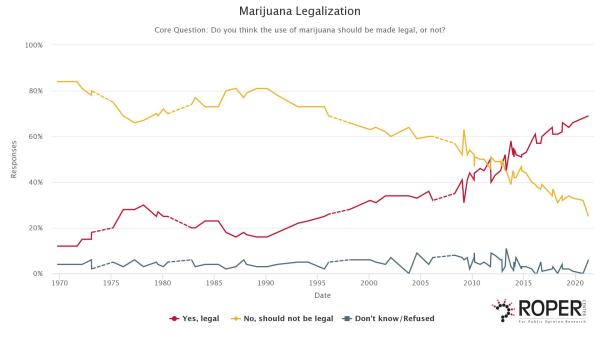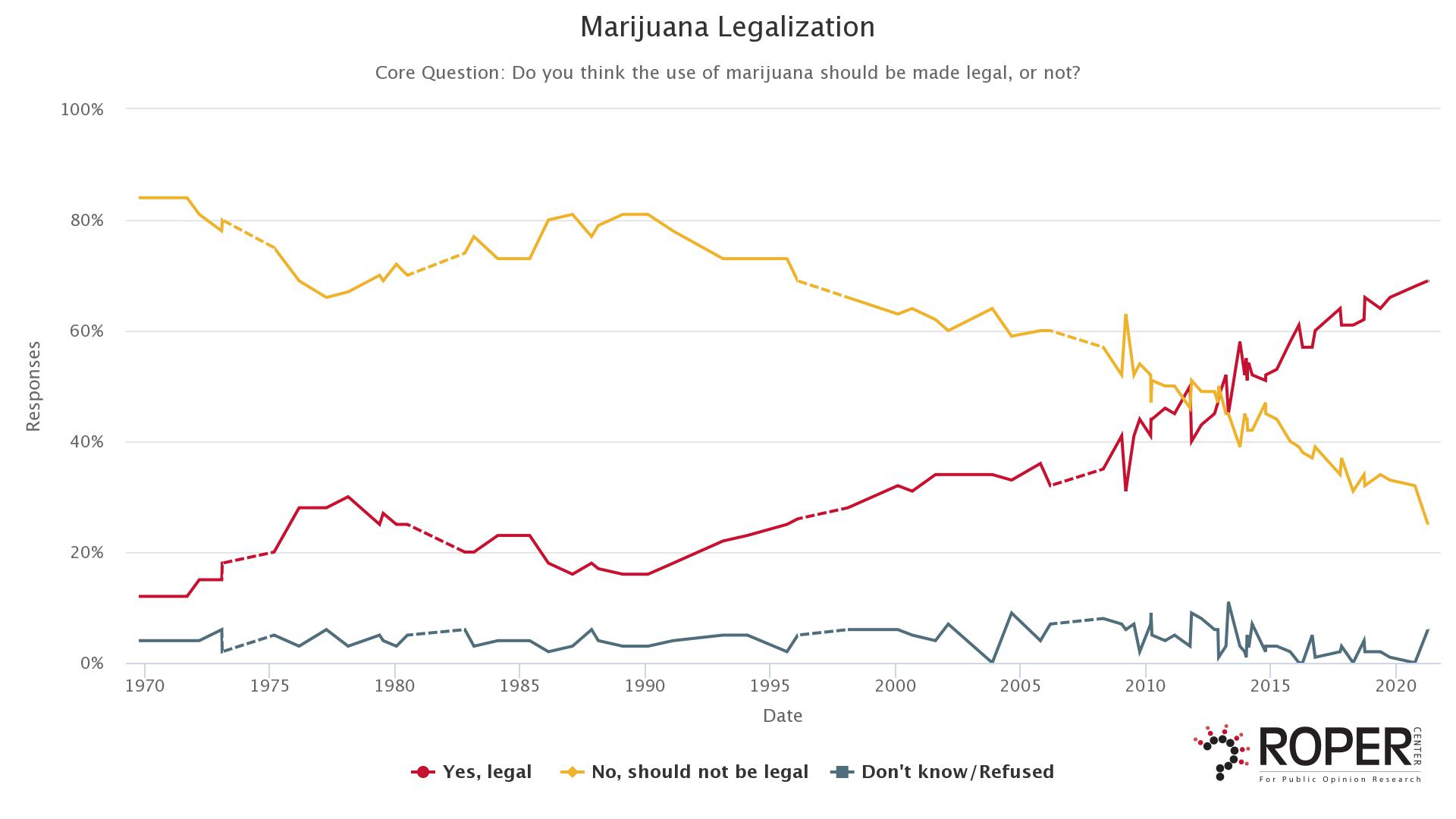Organizations: Trends include surveys from all sponsors and field organizations. Users can choose to include or exclude by sponsor or field organization.
Mode: Trends include surveys conducted by different modes. Users can choose to filter trends by mode.
Wording: Minor changes to wording unlikely to affect responses will be allowed in some instances. Introductory phrases intended to facilitate the interview process – for example, “moving onto a new topic” or “now I would like to ask you about some issues in the news” – will be ignored in trend-building, and questions including such language these can be included in a trend with other instances of the core questions. Very minor changes to the actual wording of the question, such as “in this country” versus “in the United States,” may be allowed in some trends, but will be footnoted. All full question wordings are available in Roper iPoll and in the downloadable trend file available to users at Roper Center member institutions.
Rolling polls: Rolling polls: Polls from rolling or tracking polls with overlapping field dates are not included in trends with other polls.
Sampling procedures: Trends include surveys from the Roper Center Longstanding Methods Collection, which limits current acquisitions to surveys conducted via probability-based samples and excludes IVR (Interactive Voice Response) polls, non-probability online panels, and other surveys from our Recently Developed Methods Collection. All surveys conducted before 1950 and many surveys conducted from 1950 through the early 1970s utilized quota-based sampling methods. See individual question listings for more methodological information.
Samples: Target populations must be identical.
Gaps: Trends will be created despite gaps in the data. The trendline will be notated as dashed lines for gaps between two and nine years, and dotted lines for gaps of ten years or more.
Click here or the trend below to go to the live Roper Trend in iPoll.

